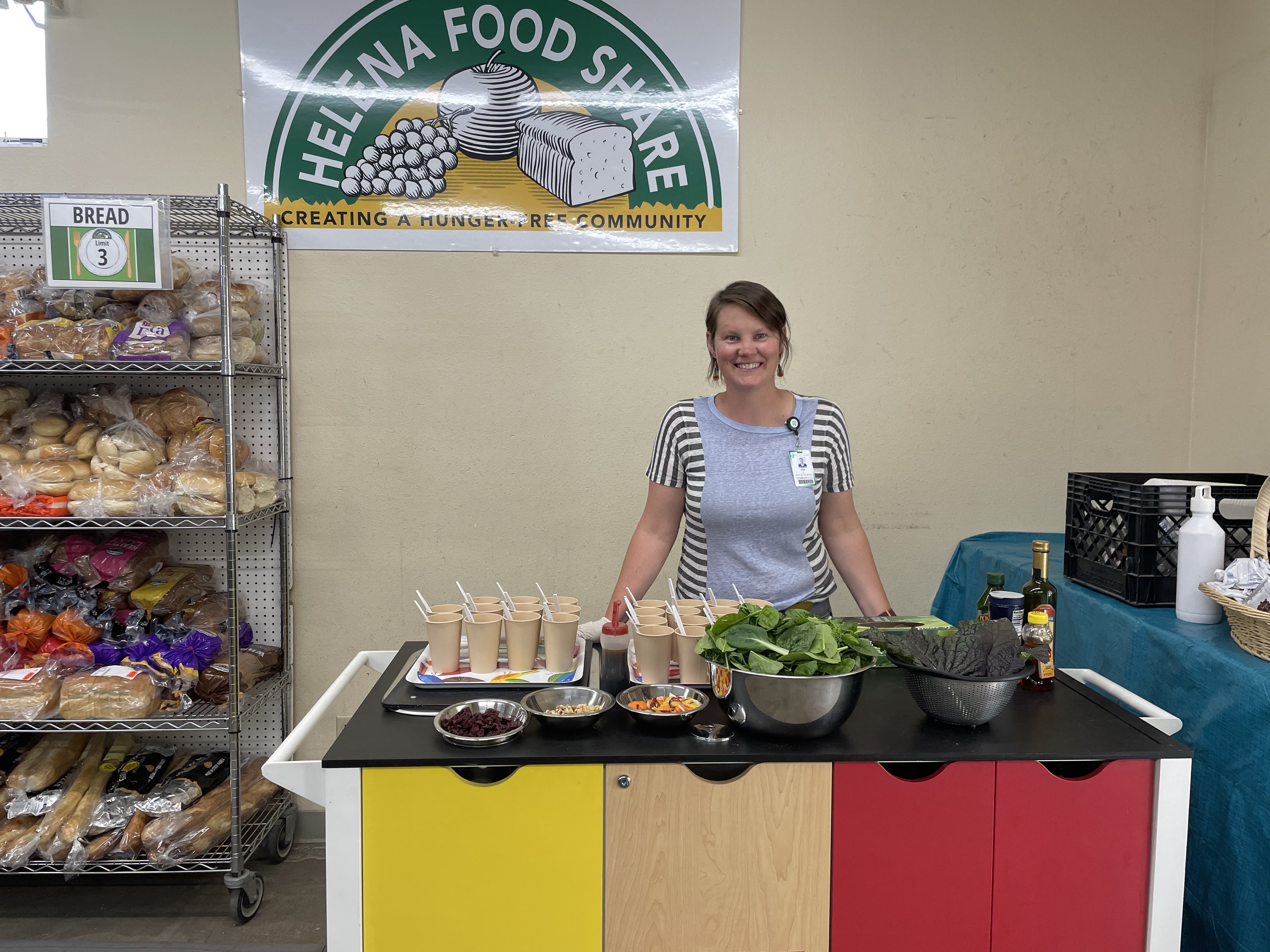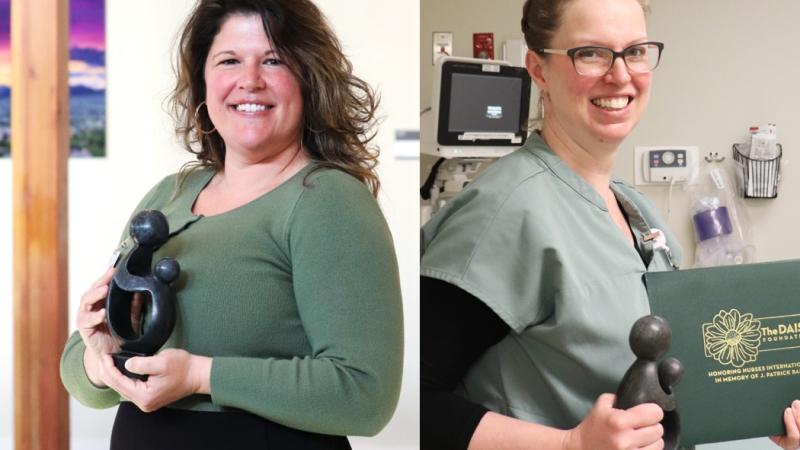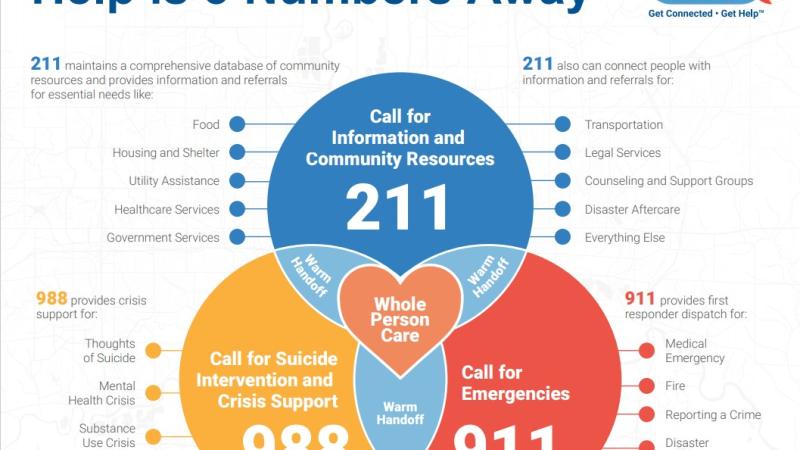
Kim Lloyd is the Harvest of the Month Program Coordinator at St. Peter’s Health. In June, she served leafy greens to folks at Helena Food Share harvested from our St. Peter's garden plat at Selma Held Helena Community Gardens.
July 13, 2022
The Montana Harvest of the Month Program showcases Montana grown foods in Montana communities. Each month, participating sites focus on promoting one locally grown item such as lentils, beets, bison, or cherries. July’s feature is Montana-grown carrots. Carrots originated in central Asia over a thousand years ago. The original carrots were purple to black in color and much woodier in texture. Europeans started enjoying carrots as a staple food in the thirteenth century. Today, carrots come in many colors including purple, black, yellow, orange, red and white and also range in size from a round, 2-inch carrot to a slender, 3-foot carrot!
The average person eats 17 pounds of carrots per year. Carrots are well known for containing high amounts of antioxidant beta-carotene which is a form of vitamin A. Beta-carotene is important for eyesight, healthy skin and growing bodies. It may also help reduce chronic diseases such as cancer and heart disease. Beta-carotene was first discovered in carrots, therefore its name came from carrots. Carrots are also a good source of vitamin C and potassium, and like most vegetables, a source of fiber.
Buying Tips
Carrots are usually sold without the stems and leaves to reduce moisture loss. If carrots still have their tops, avoid choosing the ones that are wilted or brown. You want to select carrots that are firm and bright. Larger carrots generally have a tougher texture but are great for soups and other recipes in which the carrots are a cooked ingredient. Store carrots in the refrigerator in a perforated plastic bag or wrapped in a paper towel for one to three weeks. Avoid storing carrots near items that produce ethylene gas like apples or potatoes. Carrots lose moisture through their leafy green tops, so be sure to remove the tops before storing to keep them fresh and bright for longer.
Grow your Own
Plant carrot seeds directly in the garden four weeks before the last frost in your area. Carrots can be planted in the garden up to mid-July. Some shorter varieties of carrots are suitable to container planting. Carrot seeds are small and can be difficult for children to evenly space when planting. Seed tape, on which carrot seeds are glued, can be helpful for planting carrots with kids. To make a seed tape, cut a strip of newspaper and place glue dots (or a mixture of flour and water) spaced out according to your seed packet directions. Place one seed on each glue dot and leave out flat to dry. Once dry, the seed strip may be rolled up for storage. When ready to plant, the newspaper strip can be planted directly into the garden. Carrots are a biennial plant, which means in the first year the plant forms the taproot (the part we eat) and foliage. In the second year, the plant grows larger foliage, flowers and seeds.
Cooking
Carrots are excellent eaten raw or cooked. Grate raw carrots for salads, slaw or to add to sandwiches. Roasted carrots are also fantastic and easy to make. Want your kids to eat more carrots? Try carrot fries. To do this, cut carrots length-wise into fries. Toss them with olive oil, salt, or experiment with different seasonings. Spread on baking sheet and roast at 400° for 20-30 minutes or until crisp turning halfway through.
About Harvest of the Month
The Harvest of the Month program focuses on exposing children and adults to new and local healthy foods by increasing access, education and supporting Montana farmers and ranchers. To learn more, click here.



